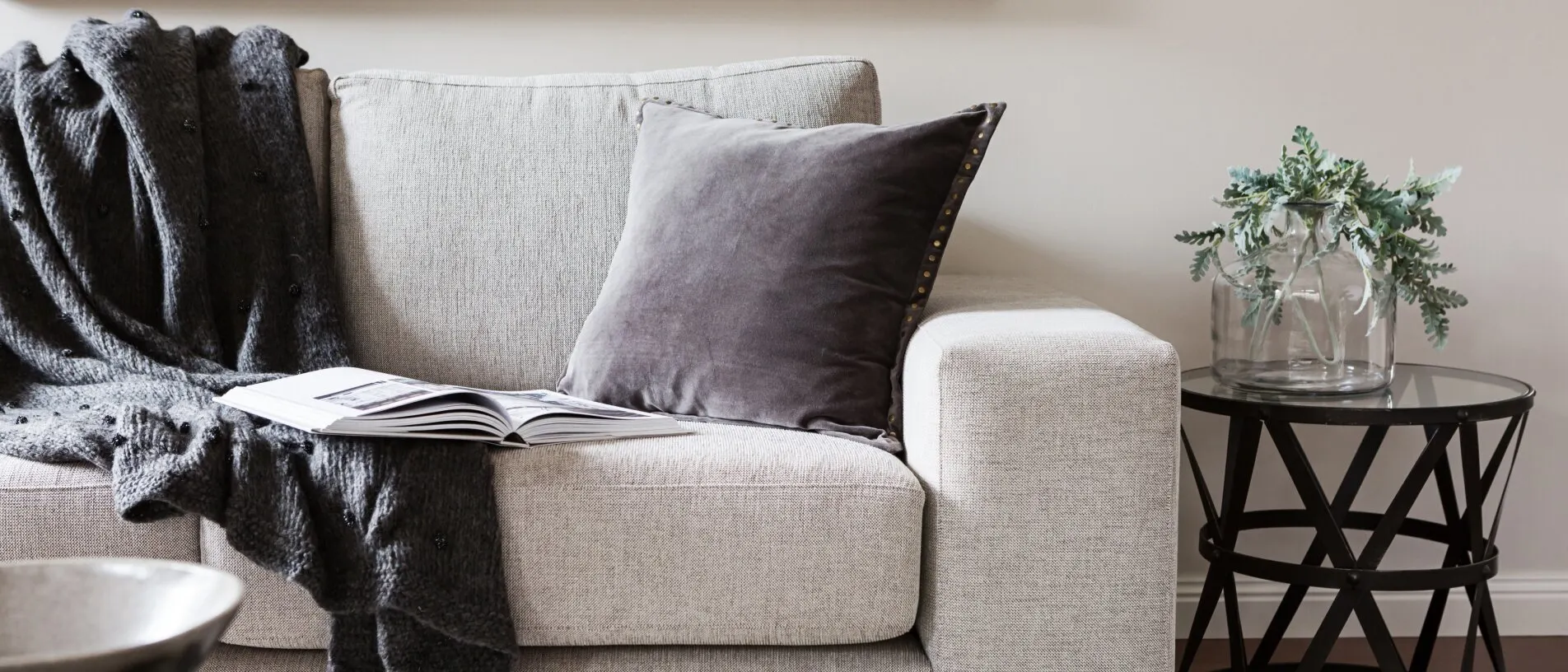You're on the list
By signing up, you agree to receive email marketing.


You’ve splurged on new furniture and can’t wait to show it off when guests come over. Everyone approves of your design choices and asks where you got your gorgeous loveseat and sofa set.
While you’re checking on food in the kitchen, it happens: Someone trips on the rug and wine goes flying — all over your couch. Panic sets in, but you’re also cautiously optimistic because you chose performance fabric for the upholstery.
Standard upholstery fabrics can complement many different interior design styles, households, and uses. But some fabrics are better than others when it comes to durability. When your couches and other upholstered furniture get high usage, you want beautiful furniture to stay beautiful. This is where performance fabrics come in.
Performance fabrics are textiles with special protective features. Depending on the fabric, they could be designed to protect against:
Water or other liquids
Fading
Stains
Punctures
Microbes like bacteria or mold
Different treatments or construction techniques give the fabric the ability to resist stains and wear:
Chemical treatments to the fabric or individual threads
Tightly woven construction
Synthetic fibers or fiber blends
Absolutely. Performance fabrics are low-maintenance and easier to clean than regular fabrics, helping you keep your furniture looking great.
Whether you want to know how to clean a performance fabric couch, arm chair, or ottoman, always start with reading the manufacturer’s instructions. These handy tags tell you what you can and can’t do for cleaning care. Fabrics usually have four common care codes:
W: Water or water-based cleaners only
S: Solvent-based cleaners only
W/S: It’s safe to use water-based or solvent-based cleaners
X: No cleaners, spot clean only
Good news! Most performance fabrics use the W/S code. In most cases, you can use water-based or solvent-based solutions for easy cleaning.
Pro tip: Always start with the most gentle cleaning method and work your way up if needed. And please follow the manufacturer’s instructions!
If your furniture has lost its sparkle, you’ll want to give your furniture a quick refresh with some general maintenance. Cleaning care varies by manufacturer and item, but there are some common steps to follow:
Grab your vacuum and attach the upholstery tool. Run it over each cushion, front and back.
Vacuum the arms, top, and back of the furniture.
Switch to the vacuum’s crevice tool and run it along the seams.
Use an upholstery brush or microfiber cloth with soapy water to wipe down the cushions.
If you find any stains, treat them according to the furniture tag instructions.
Pat the cushions dry with a towel if needed. Let air dry otherwise.
Whether they’re fresh or old, stains on your furniture are no fun and can be an eyesore that detracts from your room’s stunning design. Here’s how to clean the fabric to bring it back to its prior gorgeous state.
Vacuum up any dry solids. If it’s wet, grab any wet solids and then use a paper towel to blot the liquid.
Treat stains using warm soapy water or a solvent-based cleaner (depending on the manufacturer’s instructions).
To clean the fabric, blot the stain until it lifts. You should avoid scrubbing or using any rough motions because this can push the stain into the fibers. However, you can gently push down as you clean.
If you’ve cleaned with a soap-and-water mixture, rinse the area with clean water afterward.
Pat the area dry with a clean cloth to remove extra liquid or cleaning spray.
When you have a specific stain, you want to treat it with the right approach. Performance fabrics are designed to reduce damage, but quick action is always best for your indoor and outdoor furniture. Here are some ways to clean stains using water-based cleaners. For solvent-based cleaning, follow the manufacturer's instructions.
If you spilled wine on your upholstered couch or dining chair, grab an absorbent cloth or paper towel and blot any liquid that’s beaded on the surface. Next, add one gallon of water to a spray bottle and mix in ½ cup of hydrogen peroxide or rubbing alcohol, ¼ cup dishwashing soap, and ⅓ cup of white vinegar. Spray on the mixture and use a microfiber cloth with gentle blotting motions, pulling the stain toward its center.
Kids love crayons, but furniture doesn't! Crayons have a waxy coating that creates stubborn marks that can be hard to hide on lighter-toned furniture. To remove crayon marks, start with a cloth dipped in rubbing alcohol. Carefully wipe the crayon marks, moving from the outside to the inside. Next, use a mixture of ¼ cup dishwashing soap to one gallon of water. Spray it on and gently brush the fabric with a soft bristle brush or microfiber cloth to lift the stain.
Tomato sauce is notorious for staining regular fabric, but it can’t set in as quickly on performance fabric’s treated fibers or tight weave. To get rid of this stain, grab your spray bottle mixture with ¼ cup of dishwashing soap and one gallon of water. Spray it on and use a cloth to dab the tomato stain, moving toward its center. You may need to apply the mixture a few times to lift the stain completely.
Oil-based stains like olive oil are one of the more challenging stains to remove. Luckily, your performance fabric is up to the task! First, you need something to absorb the oil. Cornstarch works well here, so sprinkle on cornstarch and let it sit for a few minutes. Use a scraper or butter knife to lift off the cornstarch mixture, creating a cleaner surface for the next stage. Then, use the same mixture ratio you use for tomato stains: ¼ cup of dishwashing soap in one gallon of water. Spray the stain and blot with a cloth as you gently lift the oil.
There's more to life than cleaning messes! With performance fabric couches and other furniture, you can clean up those spills and get back to living. From wine stains to olive oil spills, most stains will be gone before you know it.
You're on the list
By signing up, you agree to receive email marketing.